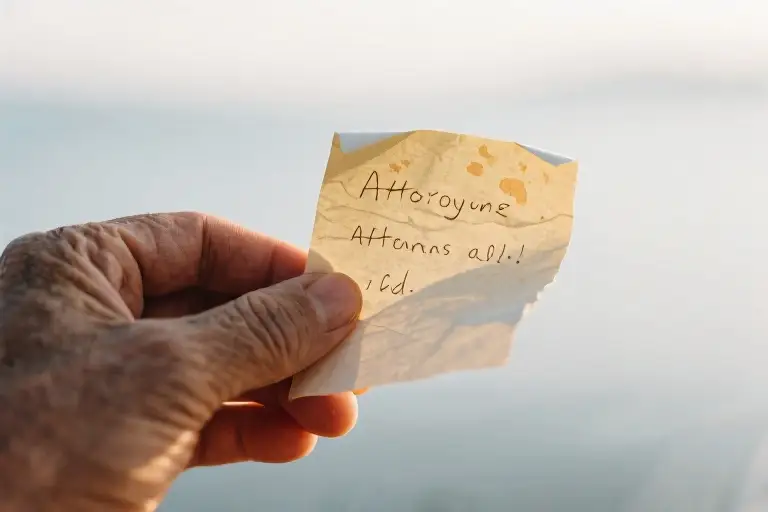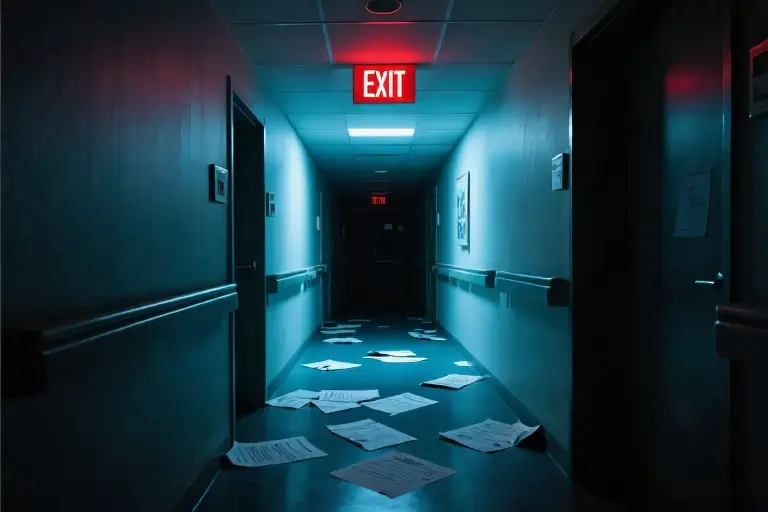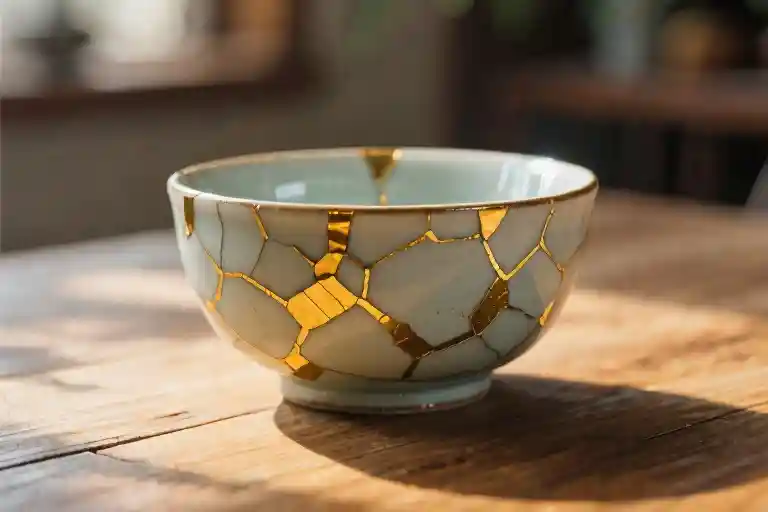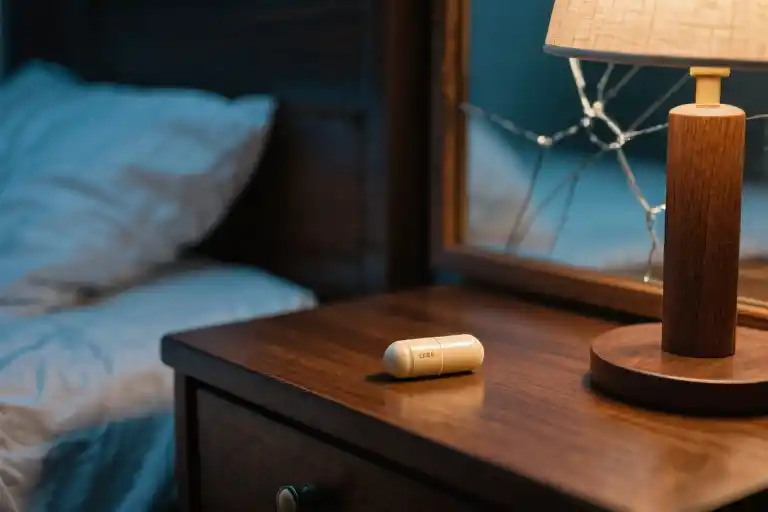The air conditioning hums too loudly in Manila’s jeepneys, that peculiar blend of diesel fumes and sweat clinging to your work clothes. In Tokyo, salarymen grip train straps with white-knuckled hands, their polished shoes reflecting flickering fluorescent lights. Shanghai’s subway crowds move like a single organism, faces illuminated by the blue glow of smartphones where unfinished reports wait. Three cities, three metal boxes carrying people who’ve mastered the art of silent disintegration.
You know that moment when the commute noise fades into static? When the weight of your eyelids has nothing to do with sleep deprivation? There’s a particular shade of gray that forms behind your eyes on these days – not quite sadness, not quite exhaustion, but something that makes convenience store rice balls taste like cardboard.
We’ve all developed our own versions of survival theater. The Manila office worker who applies lipstick after bathroom stall tears. The Tokyo accountant whose perfectly timed bows hide trembling fingers. The Shanghai marketer whose WeChat stickers radiate more enthusiasm than her actual face. These performances deserve Oscars for ‘Best Pretending Everything’s Fine While Dying Inside.’
Here’s what this conversation will allow you to do: First, to acknowledge that wearing emotional compression garments 24/7 is unsustainable. Second, to stop applauding burnout culture’s standing ovation. Third – and most radically – to notice how sunlight makes patterns on your desk at 4:37pm that look like lace.
The jeepney lurches around another corner. Someone’s elbow digs into your ribs. Your phone buzzes with another ‘urgent’ email. And yet – there’s that grandmother selling sampaguita flowers at the stoplight, her wrinkled hands weaving the blossoms into necklaces that smell like childhood mornings. The contradiction is the point. The crushing weight and the fragile beauty exist in the same breath, the same crowded commute, the same tired heart that somehow keeps beating.
The Fine Cracks in Our Perfect Facades
There’s a particular kind of exhaustion that settles in the space between your collarbones – the kind that comes from holding up multiple versions of yourself all at once. You know these personas well: the crisp PowerPoint presenter who delivers flawless quarterly reports, the group chat’s designated mood-lifter who always has the perfect meme, and the responsible adult who remembers to ask about parents’ medication schedules during Sunday calls.
What few see are the emergency repairs happening behind the scenes. Like how office bathroom stalls have become modern confessionals, where mascara streaks testify to the cost of composure. Studies in environmental psychology reveal telling patterns – corporate buildings with higher ambient humidity in restroom areas correlate with increased purchases of oil-control face sheets and eye de-puffing gels. The math is simple: more trapped moisture equals more discreet emotional releases before returning to open-plan workstations.
Readers have shared their most absurd ‘keeping it together’ moments with heartbreaking clarity. The marketing associate who developed the skill of silent crying during Zoom meetings, tears tracing the same path down her cheeks each time so she could preemptively dab that spot with a concealer sponge. The father who excuses himself to ‘check something in the car’ after tucking his children in, only to scream into a rolled-up gym towel parked in his lap. The graduate student who annotates her textbooks with perfectly grammatical despair: ‘See footnote 23 on why existence feels increasingly theoretical.’
These aren’t failures of resilience but evidence of an unsustainable emotional economy. Our bodies keep score in ways we’re only beginning to understand – the tension headaches that start precisely at 3:15pm, the mysterious rashes that bloom during performance review seasons, the way our shoulders creep toward our ears during back-to-back meetings until we resemble startled turtles. Modern life demands we become walking oxymorons: effortlessly exceptional, casually extraordinary, quietly collapsing.
Perhaps the most telling artifact of this silent struggle is the ’emergency kit’ that’s migrated from handbags to phone cases. Where generations before carried smelling salts or handkerchiefs, we’ve curated digital survival packs: screenshot folders of kind messages, playlists titled ‘DO NOT DELETE’, gallery albums of pets being ridiculous. These aren’t indulgences but psychological first aid – the emotional equivalent of keeping pressure on a wound until proper stitches arrive.
The irony isn’t lost on those who’ve mastered the art of invisible breakdowns. We can deliver TED-talk-worthy presentations on workplace wellness while our own cortisol levels spike into the danger zone. We’ll remind loved ones to ‘be kind to themselves’ as we power through on three hours of sleep and cold coffee. This cognitive dissonance creates its own peculiar physics – the simultaneous sensation of floating outside your body while being crushed by its weight.
What makes this particular brand of exhaustion so insidious is its social camouflage. Unlike visible injuries that prompt immediate concern, our culture often mistakes emotional endurance for moral virtue. We’ve internalized the dangerous equation that suffering in silence equals strength, that needing help signifies deficiency. The result is a generation of high-functioning emotional contortionists, bending themselves into impossible shapes to fit expectations that were never meant for human beings.
Yet in quiet moments – perhaps during the seventh replay of that calming rain soundtrack – a revolutionary thought sometimes surfaces: what if keeping it together isn’t the point? What if the real act of courage isn’t maintaining the facade but acknowledging its cracks? The bathroom stall weepers, the car-screamers, the textbook annotators – they aren’t failing at life. They’re conducting precise emotional triage in a world that still mistakes numbness for stability.
Next time you find yourself performing yet another emergency repair on your composure, remember: the cracks aren’t signs of weakness but evidence of pressure. And pressure, as any engineer will tell you, always finds release – whether through controlled valves or catastrophic ruptures. Our choice isn’t whether to feel the strain, but how we choose to acknowledge it before the choice gets made for us.
The Sensory Rebellion Manual
When the weight of the world makes your bones ache and your thoughts scatter like dropped marbles, your senses become secret weapons. These aren’t grand gestures of resilience, but quiet revolutions fought at 38.5°C – the exact temperature of a cat’s body when it curls against your shivering hands.
Tactical Purr Therapy
That warm spot behind Mittens’ ears isn’t just comfort – it’s biochemical warfare. Research in Psychosomatic Medicine shows sustained skin contact at this precise temperature triggers oxytocin release while lowering cortisol levels. Your trembling fingers buried in fur aren’t seeking solace; they’re conducting a precision strike against stress hormones. Next time tears threaten during a Zoom call, notice how your hands instinctively reach for the nearest warm thing – coffee mug, sunlight patch, your own collarbone. These aren’t nervous habits, but your body’s ancient protocol for emotional first aid.
Olfactory Guerrilla Tactics
That tiny vial of peppermint oil in your bag? More potent than you realize. Dab it on your radial pulse point (where nurses check your heartbeat) and suddenly you’re hacking your nervous system. As molecules travel up the olfactory nerve, they bypass the thinking brain entirely, jamming distress signals with sharp, clean freshness. It’s why hospital hallways smell like antiseptic citrus – not for cleanliness, but to short-circuit panic. Your version? The gum you chew during tense meetings, the hand cream with bergamot you reapply obsessively. These aren’t indulgences, but sensory IEDs planted against emotional exhaustion.
Sonic Resistance Movements
Consider the alchemy of your ‘can’t focus’ playlist – rain sounds layered over distant cafe chatter, the rhythmic clack of a train on tracks. Neuroscience reveals why this particular audio cocktail works: 60% predictable pattern (train rhythm), 30% neutral human activity (murmuring voices), 10% randomness (occasional thunder). Your brain latches onto the rhythm like a life raft, while the human noise tricks your primal instincts into feeling ‘safely alone in a tribe’. No wonder you instinctively turn this on when facing blank documents or overflowing inboxes – you’re not procrastinating, but building sonic scaffolding for collapsing concentration.
These sensory rebellions share a common thread – they work precisely because they’re small enough to slip past your inner critic’s defenses. No need for dramatic declarations or lifestyle overhauls. Just the quiet knowledge that when your mind becomes a hostile territory, your five senses form an underground railroad toward steadier ground. Tonight, when you absentmindedly stroke the dog’s ears or pause to watch steam curl from your tea, recognize these moments for what they truly are – not distractions, but the most ancient form of resistance.
The Museum of Imperfect Survivors
We’ve built monuments to grand victories and epic failures, but what about the quiet battles fought in bathroom stalls and late-night Uber rides? This is a different kind of museum – one that honors the crumpled tissues with mascara stains, the to-do lists where ‘shower’ appears as an accomplishment, the screenshots of texts you never sent. These are our artifacts of survival.
The admission ticket is simple: bring your most ordinary struggle. That half-empty water bottle from yesterday that you finally finished today? Exhibit A. The alarm you snoozed exactly six times before rising? Worthy of display. We’re curating evidence that continuing is its own kind of courage.
Survival Badges You Didn’t Know You Earned
Let’s redesign the merit system:
Basic Survival Medals
- Remembered to eat (even if it was just cereal at 3pm)
- Changed clothes (pajama pants count as progress)
- Let one genuine emotion surface (anger at slow WiFi qualifies)
Extra Valor Stars
- Said ‘no’ without over-explaining
- Cried in the shower instead of during the Zoom call
- Asked for help using actual words
Special Tenderness Ribbons
- Gave your past self some grace
- Noticed sunlight patterns on the floor
- Didn’t judge yourself for needing rest
These aren’t participation trophies – they’re forensic evidence that you’re navigating an impossible system with remarkable adaptability. That time you cried over spilled coffee? That was your nervous system correctly identifying the thousandth straw.
Pressure Archaeology: Then and Now
Digging through the strata of modern exhaustion reveals fascinating fossils:
1990s Anxiety Layers
- Whiteout stains on important documents
- Phone cords tangled beyond salvation
- The particular dread of hearing ‘you have mail’
2020s Stress Sediments
- Unread notification counts as abstract art
- The existential ping of Slack reminders
- Cloud storage full of screenshots you’ll never organize
Funny how the packaging changes but the weight remains similar. Your great-aunt’s ‘nervous condition’ and your ‘burnout’ might be cousins separated by vocabulary. The real progress? We’re finally admitting these things exist.
What artifact will you donate to this living exhibit? Maybe it’s the Starbucks cup with three different dates written on it, proving you reused it all week. Or that one playlist titled ’emergency serotonin.’ We preserve these not as relics of defeat, but as proof of continuous negotiation with life’s impossible demands.
Every smudged receipt where you wrote ‘breathe’ in the margins belongs here. Every screenshot of a text drafted and deleted deserves framing. This museum says: look how long you’ve been inventing ways to stay.
The tour ends at a mirror labeled ‘Most Valuable Exhibit.’ Because after all this time surviving impossible days, the real wonder is you’re still here to see it.
The Survival Checklist You Can Tear Off Today
At the end of particularly difficult days, when the weight of simply existing presses down like an overstuffed backpack, we often forget to acknowledge our most basic victories. This isn’t about grand achievements or productivity metrics – it’s about the quiet acts of preservation that keep the embers of our humanity glowing.
Consider this your permission slip to celebrate microscopic wins. A checklist that fits in the palm of your hand, with items so simple they might seem absurd until you’ve had one of those days where brushing your teeth feels like climbing Everest:
- Drank water (any amount counts)
- Breathed intentionally (three conscious breaths qualify)
- Let sunlight touch your skin (through windows acceptable)
- Made one non-obligatory human connection (cashier smile included)
- Experienced a sensory pleasure (warm mug, cool pillow)
These aren’t small things. They’re the rivets holding together airplanes mid-flight. The neurobiology behind this matters – each checked item represents a neural pathway reinforced, a cortisol spike avoided, a moment where your nervous system whispered “I’m still here” instead of screaming in panic.
We’re creating a museum of survival artifacts – not polished trophies but the beautifully worn evidence of real people navigating real storms. Submit your “battle-damaged beauty”: that lipstick-stained coffee cup from the morning you barely made it out the door, the crumpled post-it with half-written affirmations, the screenshot of a text that arrived exactly when needed. These objects become our collective proof that resilience often looks more like patched-up jeans than shining armor.
What we’re really building is an alternative scoring system. Forget the productivity apps and fitness trackers – your “survivor points” accumulate when:
- You cancel plans to honor your exhaustion
- You mute toxic positivity accounts
- You recognize that showering twice in one week can be a victory
- You stop comparing your behind-the-scenes to everyone else’s highlight reel
The revolution happens in millimeters. In the space between “I can’t” and “I did anyway.” In the way your body keeps breathing even when your mind wants to quit. Every item on this checklist is a flag planted in the territory of your own endurance.
You’ve already survived 100% of your worst days so far. That’s not a motivational poster – it’s mathematical fact. The evidence surrounds you in ordinary miracles: the bed you managed to make, the meal you somehow cooked, the deep breath you took instead of sending that angry email.
So tear this page off metaphorically. Fold it into your wallet next to grocery lists and old receipts. Let it remind you that existing is sometimes the bravest act – and that the world needs exactly the kind of courage you’re demonstrating by simply staying.
You’ve already done the hardest part.
You showed up today.
You’re doing better than you think





